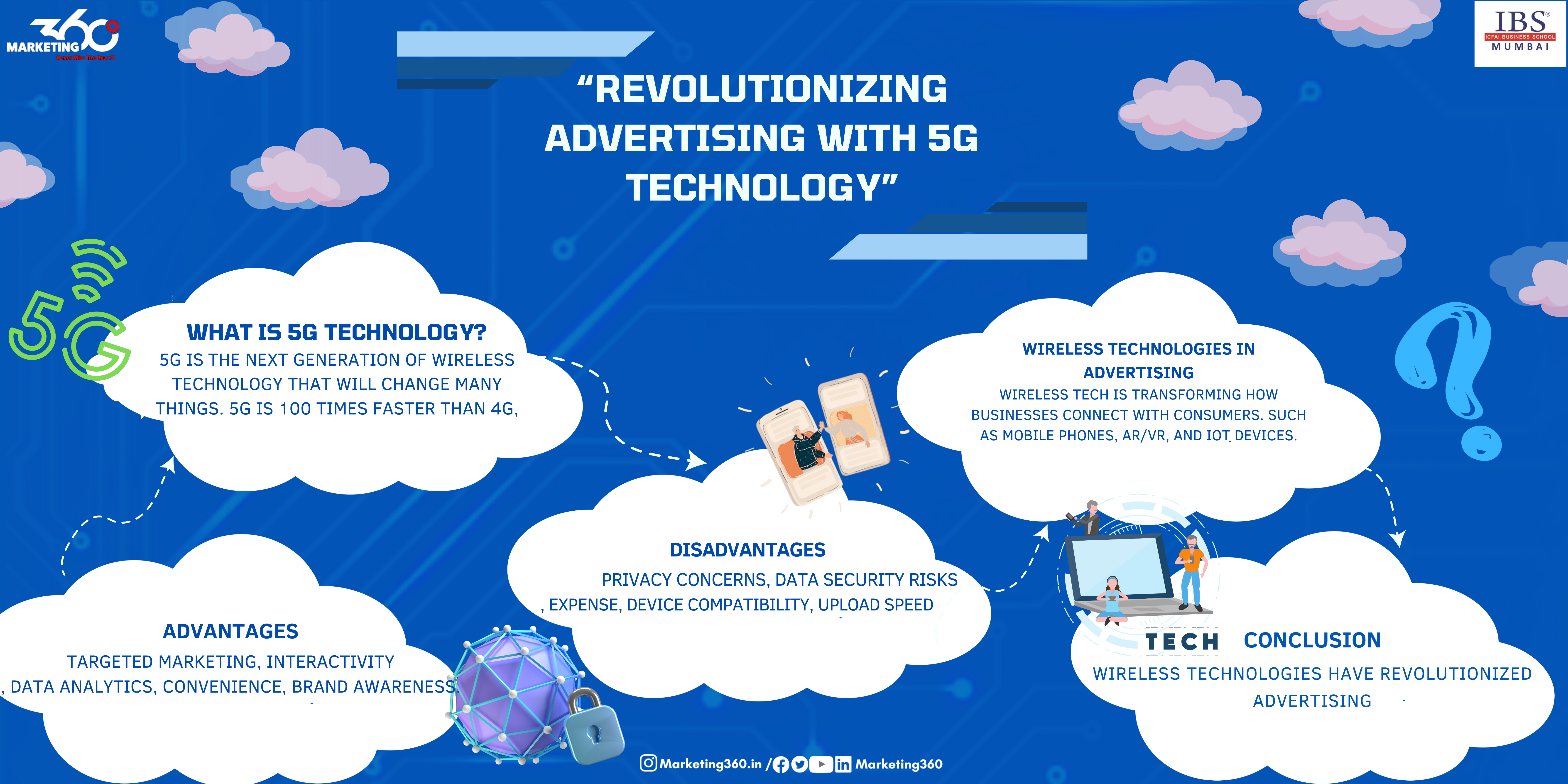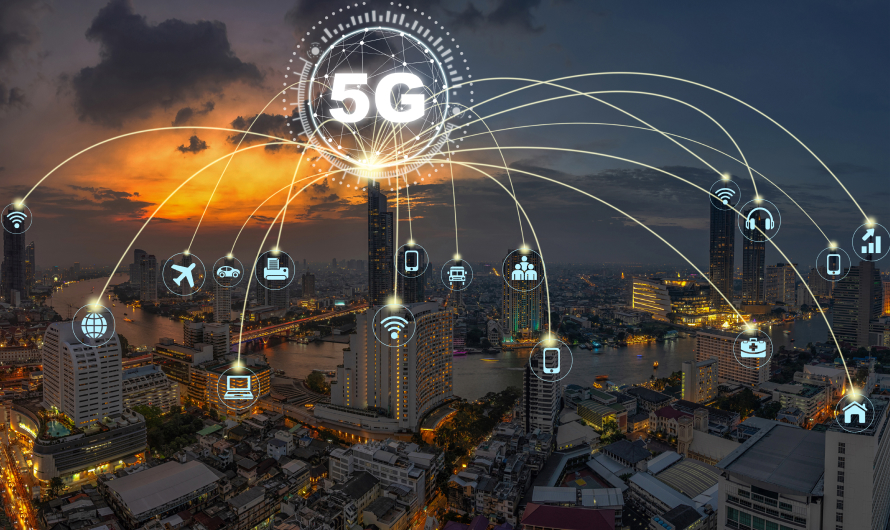
Key takeaways:
- To understand wireless devices are highly accessible and handy, allowing users to carry them everywhere.
- To understand wireless technology is the future of advertising. This is more precise than the old traditional way of advertising.
- To study the widespread use of smartphones among consumers has a significant impact on advertising and marketing.
Introduction
What is 5G technology?
5G is the next generation of wireless technology that will change many things. 5G is 100 times faster than 4G, which means you can easily transfer large amounts of data in a very short period. 5G technology will have a significant impact on creating brand awareness, increasing sales, and promoting new products in the market. New advertising technology will bring an impactful, revolutionary change in the use of mobile devices and new forms of advertising. The current generation is very fast, adaptive, and attracted to new wireless advertising technology. New advertising technology enables the advertiser to raise awareness regarding various product lines through these 5G networks.
Wireless technology has become an integral part of our daily lives. In the rapidly evolving landscape of advertising, wireless technology emerged as a driving force behind unmatched change. From mobile-based marketing and location-based marketing to augmented reality and virtual reality experiences, wireless technologies are changing how businesses connect with consumers. Advertisers have grabbed this opportunity to rebuild advertising strategies and connect with consumers in more innovative ways.
How's 5G different?
5G is a better way for devices to connect. It has the potential to do more things, like enhance how we use our devices, create new ways to use technology, and offer new services. 5G is designed to offer peak data rates of up to 20 GBPS. With high-speed internet and low latency, 5G will grow the mobile ecosystem into a realm. 5G will enhance every industry, including digitalized logistics, safer transportation, the healthcare sector, and many more.

Change in the market due to wireless technologies:
The increasing utilization of wireless technologies such as Bluetooth, GPS, and Wi-Fi are broadening the growth of the wireless connectivity market. Wireless systems decrease the burden of heavy, bulky cables, cutting down on the cost associated with installation and operation for a wide range of businesses. Also, the introduction of new 5G technology aims to enhance the growth opportunities within the wireless connectivity sector.
Wireless technology plays a prominent role in advertising in numerous ways, such as by improving marketer’s ability to reach and engage their target audience.
- Mobile Advertising: Smartphones and tablets have become integral parts of human beings. They serve as the primary medium for advertising. Wireless technology allows advertisers to provide content directly to these devices, whether through mobile apps, websites, SMS messages, emails, etc. The latest trend is shifting towards advertising on social media platforms where young people are actively personalizing their profiles with advertiser’s campaigns that are becoming increasingly targeted.
- Location-based advertising: Wireless technologies such as GPS and Wi-Fi play a crucial role in location-based advertising. Marketers use the user’s real-time location data to deliver relevant ads to the target audience. For example, a coffee shop can send a special offer message to an individual who is passing by the coffee shop. This level of personalization increases customer engagement.
Types of location-based marketing:
- Data collection and analysis: IoT accumulates a high amount of data about users’ tastes and preferences. This data can be helpful for the advertiser to make relevant ad campaigns. For example, a smart fridge can track wearable items used by consumers, allowing food and beverage companies to send personalized promotions.
- Personalized advertising: IoT devices enable highly personalized advertising. Advertisers can use the data from smart devices to showcase the relevant ad to individual users. For example, a smartwatch fitness tracker can display ads for fitness products such as healthy snacks or workout equipment based on the user’s activity level.
- Smart Home Appliances: IoT-enabled smart home appliances like thermostats and lighting systems offer advertising opportunities. For instance, smart thermostats can display energy-saving tips and ads related to energy-efficient appliances.
- Augmented Reality (AR) and Virtual Reality (VR): AR and VR can enhance the advertising experience. For instance, smart glasses or virtual headsets can overlay display content into the user’s physical environment, showcasing unique advertising opportunities such as virtual product try-ons or immersive brand experiences.
- Voice-Activated Advertising: IoT devices with voice assistants such as Amazon Echo and Google Home can be used for voice-activated advertising. Users can inquire about products or services, and advertisers can provide relevant information or promotions through voice messages.
- Interactive Display: Smart displays, like those found in IoT-enabled kiosks, enable an interactive advertising experience. Users can catch the advertisement by touching the display, allowing prompt feedback and user engagement.
The world of advertising is wholly transformed by the new wireless technology, all thanks to 5G technology. These new advertising technologies have not only changed the way advertisers reach their audience but have also made advertising more personalized.
Traditional forms of advertising such as print and TV have been replaced with new advertising technology. However, as communication technology continues to advance with wireless technology and other innovations, advertising must also adapt. The way we perceive advertising has transformed due to the emergence of wireless access, mobile phones, and social media networks.
Many companies have adopted their advertising with wireless technologies.
Here are some examples.
- McDonald’s: McD uses GPS and mobile apps to send location-specific promotions to their customers when they are near the restaurant. McD experimented with other technologies such as AI, voice recognition, and dinner delivery. This enables more personalized service and quick order fulfilment. These innovative ideas have the potential to enhance the drive-thru experience and increase efficiency.
- Nike: Nike created mobile apps and used Bluetooth technology in their stores to provide customers with personalized recommendations and offers based on their preferences. Nike also launched a pair of self-lacing trainers that fit the shape of the wearer’s foot and can be controlled by a smartphone.
- IKEA: IKEA uses augmented reality technology to allow customers to visualize what their wardrobe, bed, and other furniture would look like in their home before purchasing the product. Once the customer finalizes the design, they can add everything to their online cart.
- Snapchat: Snapchat also uses augmented reality advertising filters that allow users to interact with brands and products in a fun and engaging way. OnePlus collaborated with Snapchat to create ‘The Balcony Diwali’ campaign. During COVID-19, they created a special filter that lets you send Diwali wishes without physically meeting the people. This filter has some cool effects, like using your hand movements and the sky to make it look magical. When you open it, you’ll see a shiny screen with a replica of the OnePlus flagship phone.
- Lenskart: Lenskart uses 3D AI technology in the application, which allows the consumer to try a wide range of frames virtually. This technology also suggests which frame is suitable for your face type. It provides convenience to the customer; they no longer have to visit the store physically if they don’t want to.
Advantages of Advertising with wireless technologies:
Wireless technology, or wireless networks, has several advantages, which are as follows:
- Targeted Marketing: Wireless technologies allow advertisers to perform precise targeting based on user location, taste, preferences, and behaviour, ensuring that the ad reaches a relevant target audience.
- Interactivity: Wireless advertising technologies incorporate interactive elements such as clickable links or augmented reality (AR) features. This increases the user experience and user engagement.
- Data Analytics: Wireless technology collects user data based on individual tastes and preferences; this allows the advertiser to make advertising strategies more effective and create ad campaign effectiveness.
- Convenience: In today’s world, every person uses smartphone devices, making it convenient for users to engage with content on the go. The consumer doesn’t need to visit the store physically. Everything is done with just a single click on the smartphone.
- Brand Awareness: Wireless advertising allows advertisers to provide easy access to brand awareness about different product lines through wireless technology.
- Powering innovation: 5G technology is the perfect way to connect to a wide range of devices, including drones and sensors. It provides strategies to gain momentum in the adoption of IoT so that business can increase their productivity and innovation.
Disadvantages of Advertising with wireless technologies:
- Privacy Concerns: Collecting data from wireless technology has some significant privacy concerns. Users might feel uncomfortable with the amount of personal information being collected. There is always a risk associated with the minds of consumers when personal information is taken from them.
- Data security risks: the more data collected, the greater the risk of data breaches and cyberattacks. Excessive data can overwhelm advertisers and make it more challenging to extract meaningful data. Advertisers need to invest more in advanced analytical tools to sift through the data effectively.
- Expensive in nature: Implementing wireless advertising strategies, especially those involving advanced technology like AR and VR, can be very expensive. Smaller businesses may find it challenging to invest in this expensive technology.
- Device compatibility: Not all users have the latest or compatible device required for 5G technology. So, it can be time-consuming to shift from the old generation to the new generation.
- Upload speed: 5G technology ensures that mobile users can download faster. On the other hand, upload speed does not exceed 100Mbps compared to 4G technology. Moreover, mobile phones need better battery technology when using 5G networks.
- Limited Global Coverage: The main drawback is that it has limited global coverage and is only available in several areas. Only cities benefit significantly from 5G networks and remote areas may not get its coverage for some years. Also, the installation cost of the tower station is high compared to other networks.
Conclusion:
Advertising can never be stopped. In conclusion, wireless technologies have revolutionized the advertising landscape. Mobile advertising, IoT, 5G, augmented reality (AR), virtual reality (VR), and other wireless technology advancements have opened up multiple options for advertisers to connect with consumers. However, as this field continues to progress and evolve, advertisers must adapt to changing consumer expectations. The transformation of advertising with wireless technology is an ongoing process, and it promises innovation and challenges in the years to come.
External Link: https://bit.ly/40pssz1
External Link: https://bit.ly/3QpTlyd

Ronak Padhiyar
Content writer

Sayali Daga
Graphic designer

Aditya Patil
Editor

Wonderful web site Lots of useful info here Im sending it to a few friends ans additionally sharing in delicious And obviously thanks to your effort
Fantastic site Lots of helpful information here I am sending it to some friends ans additionally sharing in delicious And of course thanks for your effort
I loved as much as you will receive carried out right here The sketch is attractive your authored material stylish nonetheless you command get got an impatience over that you wish be delivering the following unwell unquestionably come more formerly again since exactly the same nearly a lot often inside case you shield this hike
Normally I do not read article on blogs however I would like to say that this writeup very forced me to try and do so Your writing style has been amazed me Thanks quite great post
A person essentially help to make seriously articles I would state. This is the first time I frequented your web page and thus far? I amazed with the research you made to make this particular publish incredible. Excellent job!
We’re a group of volunteers and opening a new scheme in our community. Your web site provided us with valuable info to work on. You have done a formidable job and our whole community will be thankful to you.
You made some first rate factors there. I looked on the web for the problem and located most people will associate with with your website.
Thanks for sharing your ideas with this blog. Likewise, a delusion regarding the banks intentions while talking about property foreclosure is that the standard bank will not take my payments. There is a specific amount of time that the bank will require payments here and there. If you are very deep inside the hole, they will commonly require that you pay that payment in full. However, i am not saying that they will not take any sort of installments at all. Should you and the lender can have the ability to work one thing out, your foreclosure process may halt. However, in the event you continue to pass up payments within the new plan, the property foreclosure process can just pick up where it left off.
To the marketing360.in webmaster, Your posts are always well-delivered and engaging.